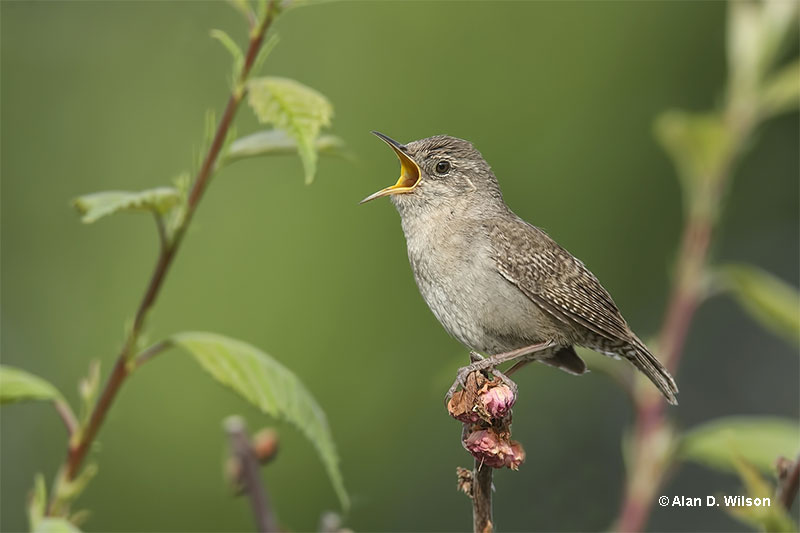
Songbirds are truly a joy to listen to! Waking up to birdsong is one of life’s simple pleasures.
Most birds make vocalizations, but not all of them are songbirds. These are the birds that sing beautiful and complex songs, warblers that cheep, chip, and trill, wrens with bold, loud voices, pleasant warbling finches and more.
Which types of songbirds live in the US? And which species sing the best?
On this page
Types of Songbirds
Mockingbirds
Mockingbirds have long been recognized for their amazing vocal ability. Indigenous cultures were well aware of their singing prowess and featured the feathered virtuosos in various stories and legends.
When European colonists encountered Northern Mockingbirds, they quickly realized how well the birds could sing. As the USA evolved as a nation, this species was likewise celebrated in story and song. In the 1800s, many were captured for the cagebird trade and the best singers would be worth $1,000 in modern times!
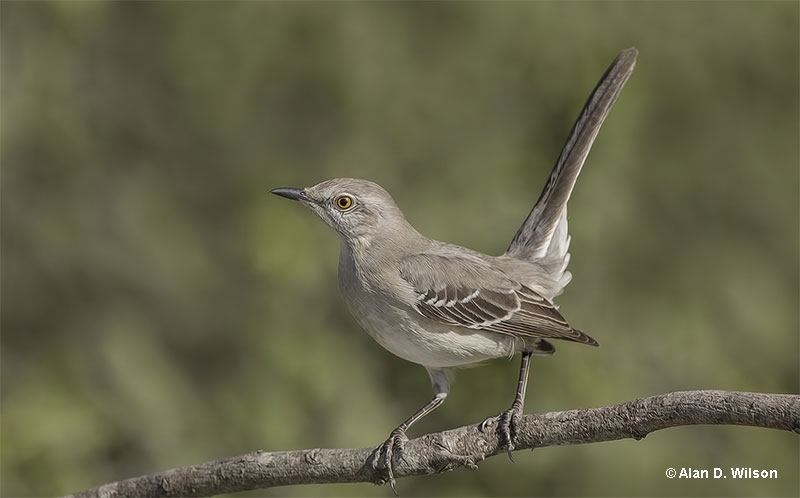
Northern Mockingbirds are arguably one of the top songbirds in the USA. These vocal birds sing so often, it can seem like they call for hours, even in the middle of the night.
The songs of mockingbirds are melodious, varied, and rich with imitations of other birds. Most imitate a dozen or so species, but some can mimic more than 30 other birds!
No matter how many birds they mimic, mockingbirds vary those sounds to make dozens of different songs. Although they don’t imitate voices, such songs can also include the calls of frogs and toads, and even some mechanical sounds!
The males learn how to sing at a young age and may continue learning new bird songs as an adult.
Orioles
Orioles are another type of accomplished songbird. These beautiful members of the blackbird family tend to have pleasant, flute-like, whistled songs. They also make chattering calls, but most sing varied, whistled phrases.
In eastern North America, we commonly hear such whistled songs given by Baltimore Orioles. It’s one of the many beautiful bird songs of May and sounds much more melodious than the harsher notes and trilled vocalizations of the Orchard Oriole.
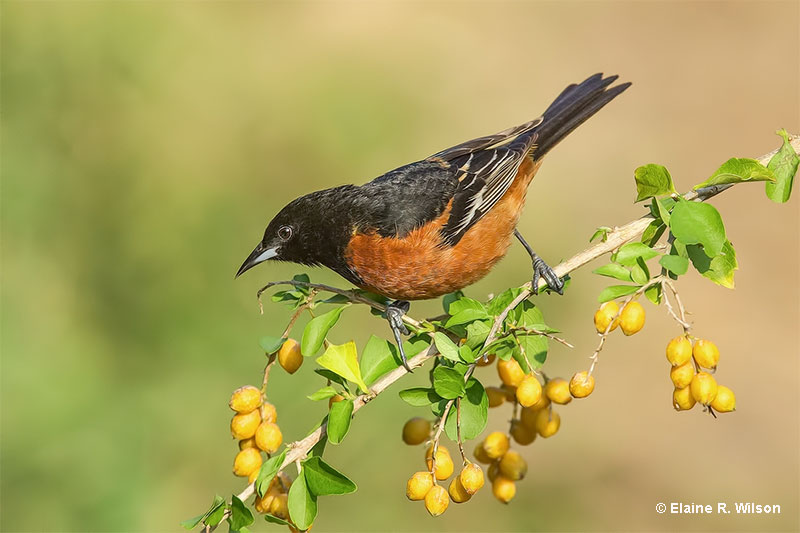
In the west, the Bullock’s Oriole sings a hurried set of whistled notes from riparian zones, but most orioles in North America live in the southwestern USA. These include the Hooded Oriole, Scott’s Oriole, Altamira Oriole, and Audubon’s Oriole.
These birds have somewhat similar songs, but those of the Hooded Oriole are choppy and often include imitations of other species.
Scott’s Orioles have low whistles with some gurgled calls, Altamira Orioles sing spaced whistled notes, and Audubon’s Oriole has a much slower, whistled song.
Finches
Finches are another group of well-known songbirds. These pretty little birds tend to have complex, pleasantly warbled songs and can be heard in all sorts of habitats.
One of the most common is the American Goldfinch. From country meadows to big backyards, the bright yellow males sing pretty, complex, chipping songs. In western states, two other goldfinches, the Lesser and Lawrence’s Goldfinches, sing similar chattering songs.
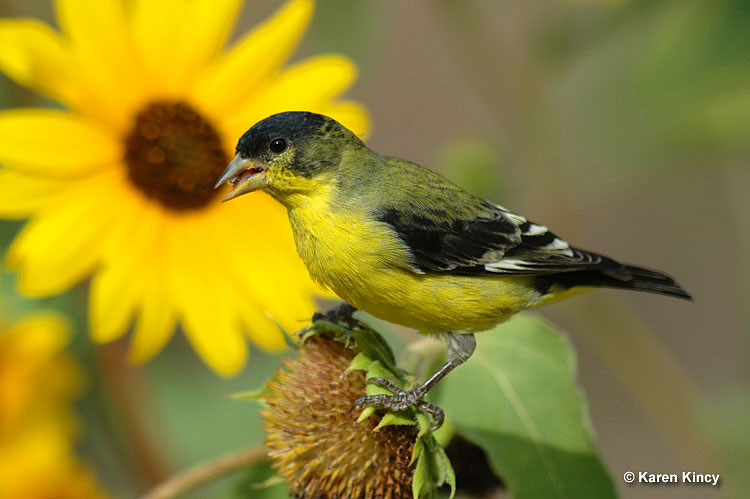
In most places, we also hear the hurried and complex song of the House Finch. It sounds a lot like the related Purple Finch, but that bird’s song is less harsh and more melodious. In the mountains, the similar Cassin’s Finch also has a similar song but has a hurried, higher-pitched song that ends in a longer trill.
Another finch with a nice song lives in the high mountains and the northern forests. In those habitats, we can listen to the pretty melodious warbles of the Pine Grosbeak.
Thrushes
The thrushes are another excellent group of singers. Most people are familiar with the pretty song of the American Robin. In spring and summer, these handsome birds belt out their flute-like, lovely songs from trees in most neighborhoods.
In the woods and on migration, we can also hear the beautiful songs of several other thrushes.
On their way north, Swainson’s Thrushes carol ethereal, rising songs while Gray-cheeked Thrushes sing more chattering and descending notes.
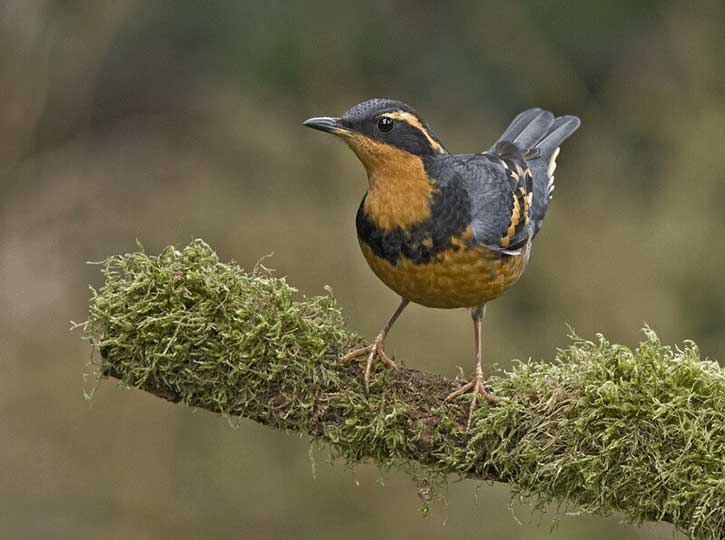
In montane and northern woodlands, we recognize Hermit Thrushes by their pleasant songs with longer introductory notes.
Eastern woodlands also often feature the beautiful descending, flute-like songs of the Veery, along with the haunting and mysterious whistled songs of Wood Thrushes.
In the Pacific Northwest, there is the song of the Varied Thrush; an ethereal trill or long whistled note that fits in perfectly with its misty, deep forest surroundings. Bluebirds also sing; however, their brief chattering songs can’t compare to their relatives.
Starlings
Starlings aren’t so appreciated in North America, but in their native European range, these birds are viewed as beautiful and unique songsters. If we listen to starlings in the USA, we just might come to the same conclusion.
Starlings actually belong to one of the most impressive of songbird families. Most species live in Africa and Asia, and many of them sing fantastic songs that consist of mechanical sounds, trills, and more.
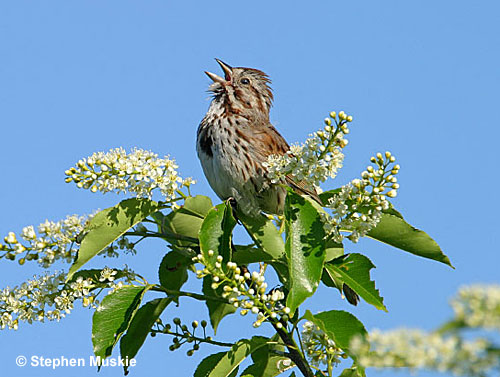
Mynas are also in the starling family, and these birds, in particular, sing beautiful songs, mimic other birds, and can even imitate human words!
Not to be outdone, the European Starlings that we see in the USA have songs that sound like a mix of robotic chipping mixed with trills, warbling calls, and imitations of other bird species. The next time you see a singing starling, listen close, you might hear the calls of a Killdeer!
Sparrows
In the USA, we have two main types of sparrows. There are the native New World Sparrows, such as the Song Sparrow, and the House Sparrow, an introduced species in the Old World Sparrow family.
House Sparrows only sing simple chipping songs but many New World Sparrows have pretty vocalizations. Some of the best singers are the big sparrows, the White-crowned, Golden-crowned, Harris’s, and White-throated Sparrows. The White-throated Sparrow, in particular, has an evocative whistled song. It sounds like it’s saying, “Ohhh Canada Canada Canada.”

Song Sparrows, Fox Sparrows, and Lincoln’s Sparrows also sing short and pretty songs composed of trills and warbling notes. The Chipping Sparrow and a few other species sing trilled songs, and the big Lark Sparrow has complex and varied vocalizations.
Learn more: 36 sparrow species in the U.S.
One of the better singers of the group is the Vesper Sparrow. This field bird starts with a couple whistled notes and then continues with trills and chattering calls.
Grosbeaks
Grosbeaks are hefty, finch-like birds with conical beaks. They are also great singers! This family also includes buntings, and one of the most familiar beautiful garden birds, the Northern Cardinal.
All grosbeaks are pretty good singers, but the cardinal might be the best.
This lovely bird sings a rich series of repeated whistled notes that can sound like, “What cheer…what cheer, chew chew chew chew chew”. Much to our happiness, this crested bird also sings from roofs and garden trees, especially in spring and summer.
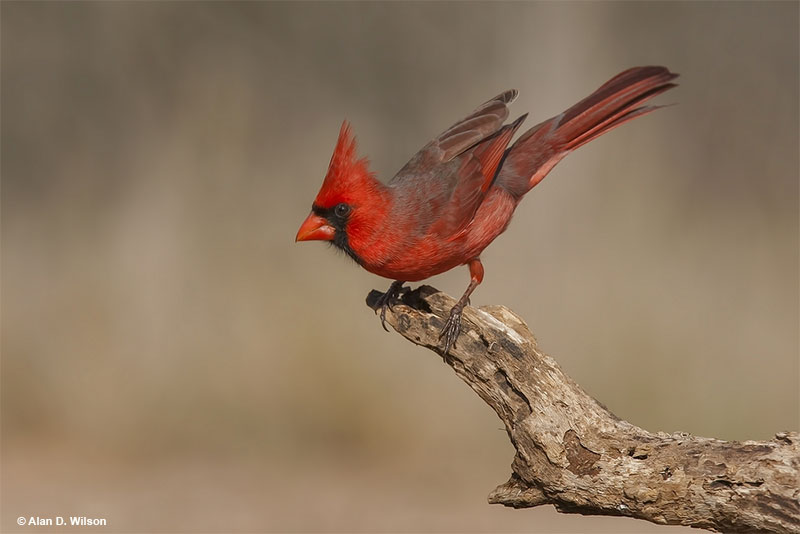
The simple whistled song of its desert relative, the Pyrrhuloxia, isn’t too shabby either.
Rose-breasted Grosbeaks and their western counterpart, the Black-headed Grosbeak, have melodious warbling songs that sound like a robin in a rush. Sometimes, their songs are also described as sounding like a drunk robin!
In brushy habitats, we can also listen to the choppy, warbled and trilled notes of the Blue Grosbeak and bunting species.
Wrens
Wrens might look plain, but they make up for it with fantastic voices. Every wren species is an accomplished singer and the songs of some tropical species sound simply amazing!
However, wrens in the USA aren’t to be outdone. These birds sing loud and lovely songs too. One of the most common, the House Wren, sings a cheerful, chattering song that ends in a descending, warbled trill.
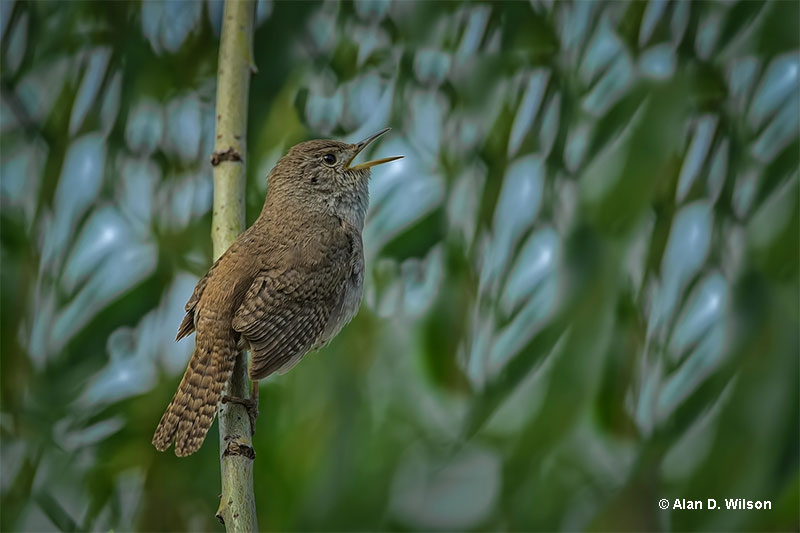
The Bewick’s Wren and some other wren species also sing songs that include trilled phrases while the Carolina Wren has a loud, whistled voice that says, “teakettle teakettle teakettle”. The Canyon Wren also impresses with loud whistled notes that jump down the scale.
The best wren singers in the USA are probably the Pacific and Winter Wrens. Both of these small birds have amazing and loud voices. While hidden in the understory, they belt out a complex and pretty series of trills and high-pitched whistled notes.
Tanagers
In the USA, there are only a few true members of the Tanager family. Only one, the Morelet’s Seedeater, has a nice song. This little finch-like bird ranges into southernmost Texas, where it sings whistled, finch-like phrases.
The other tanagers in the USA are actually related to cardinals and grosbeaks, but we still refer to them as tanagers. These beautiful birds fill spring and summer woodlands with lovely bird song.
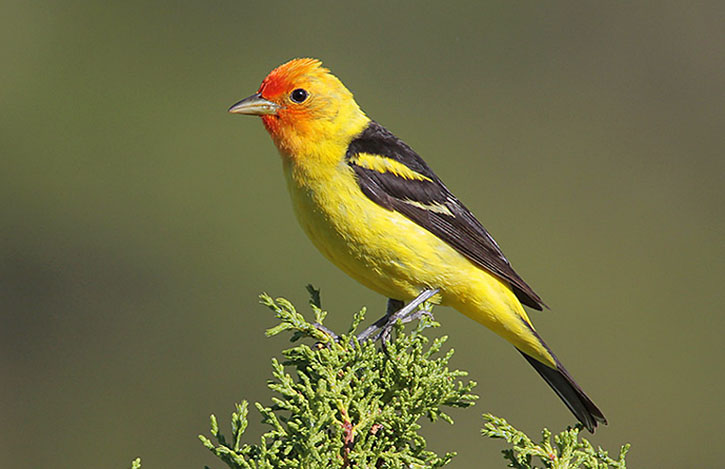
In the eastern forests, if you hear a bird that sounds like a drowsy American Robin or one that might have a cold, you’re probably listening to a Scarlet Tanager. Their songs are also shorter than the robin’s and are always much huskier.
In the southern states, the Summer Tanager sings even more like a robin. However, it sounds a bit more hurried and has one or two burry notes.
In western states, the Hepatic Tanager and the Western Tanager also similar, short, robin-like songs.
Frequently Asked Questions
What is the most common songbird?
The most common songbird is either the American Robin or the Northern Cardinal. In the USA, both of these lovely singing birds are seen more often than most other species.
Is a robin a songbird?
Robins are well-known songbirds. Both the European Robin and the American Robin belong to the songbird order, the Passeriformes.
Is a dove a songbird?
Doves are not songbirds. Doves have mournful cooing voices and belong to the Columbidae order.
Are magpies songbirds?
Although you wouldn’t think so at first, magpies are, in fact, songbirds. Although these bold birds make harsh, chattering sounds, since they are Passeriforms, they are technically songbirds.
Are crows songbirds?
Crows are actually songbirds. Similarly to magpies, even though they don’t have pleasant voices, they are Passeriforms and, therefore, songbirds.
Is there a bird that sings like a human?
There are no bird species that sing like humans. However, a few species, such as the Nightingale Wren and Musician Wren, can sound a lot like a person who is whistling. Some parrots and mynas can also imitate singing people, but only domesticated ones.
What bird sounds like a cat meowing?
A bird that sounds like a cat meowing is a Gray Catbird. This member of the mockingbird family often makes a meowing call.

